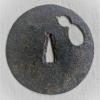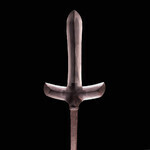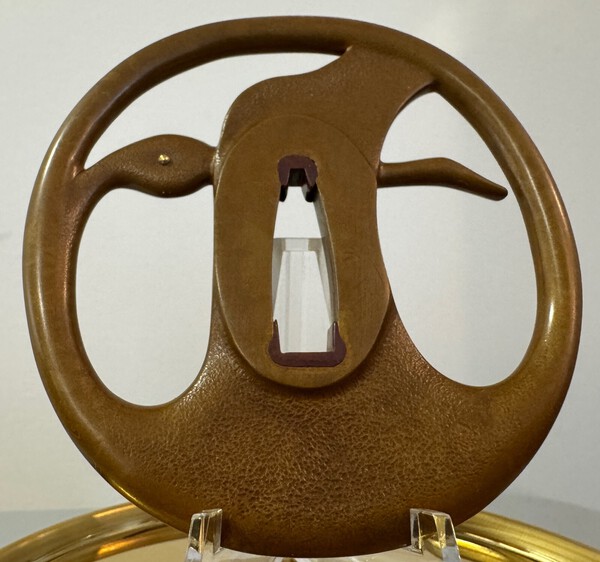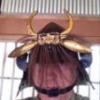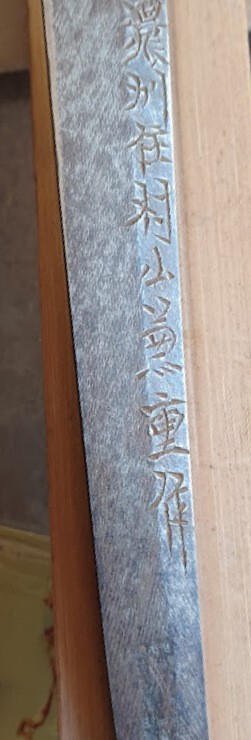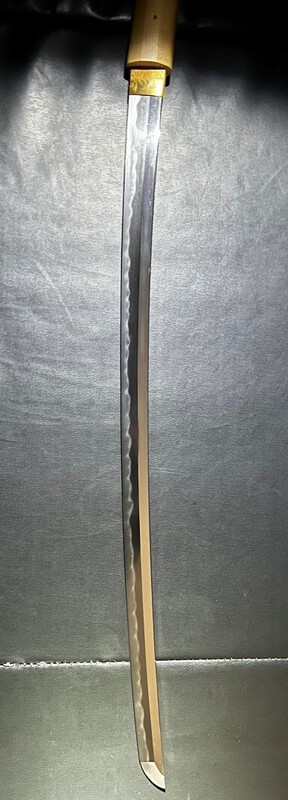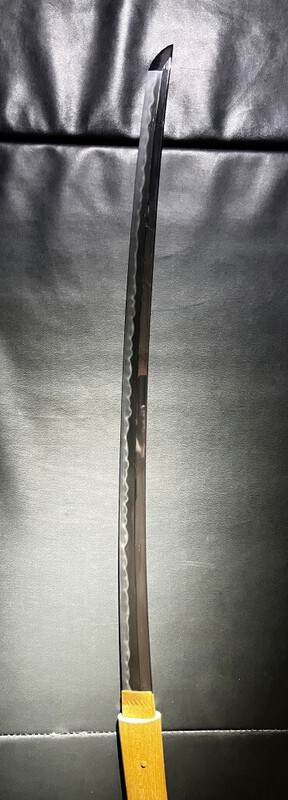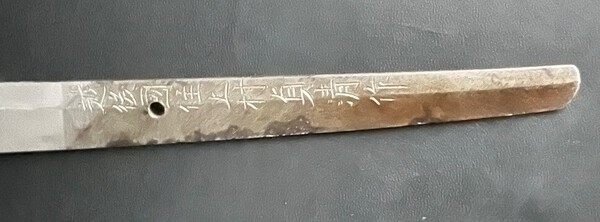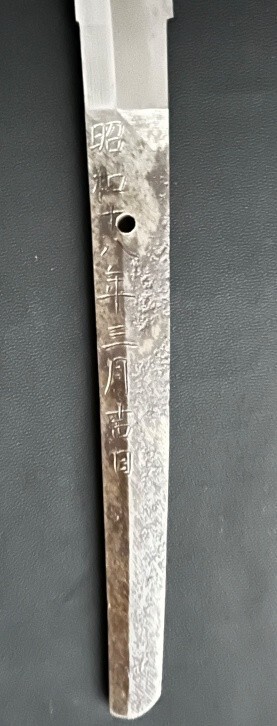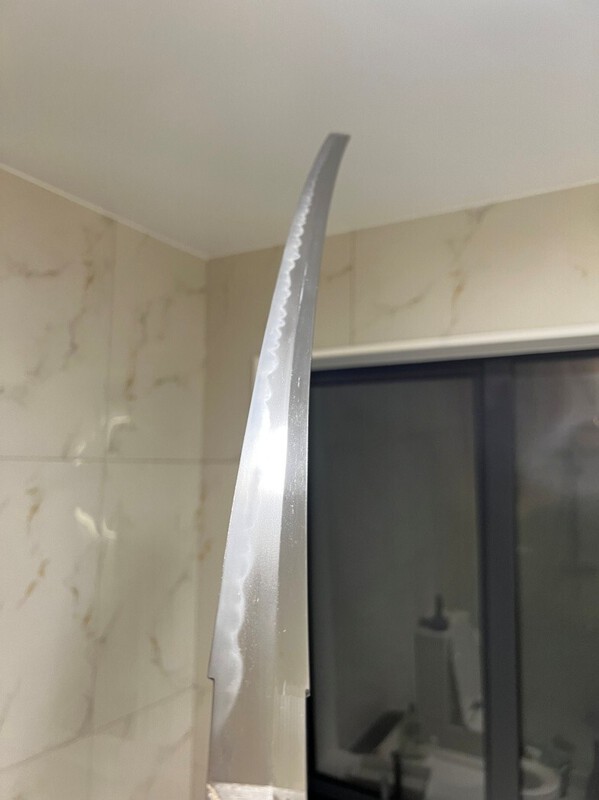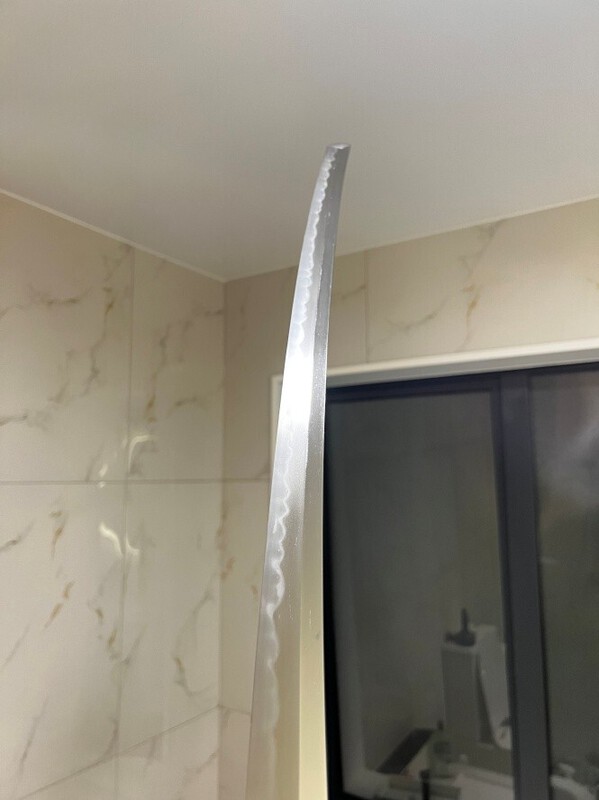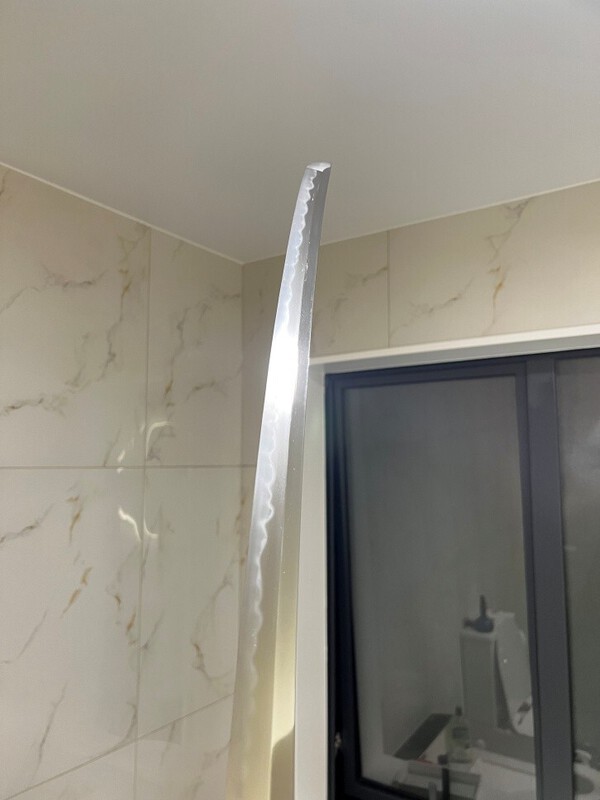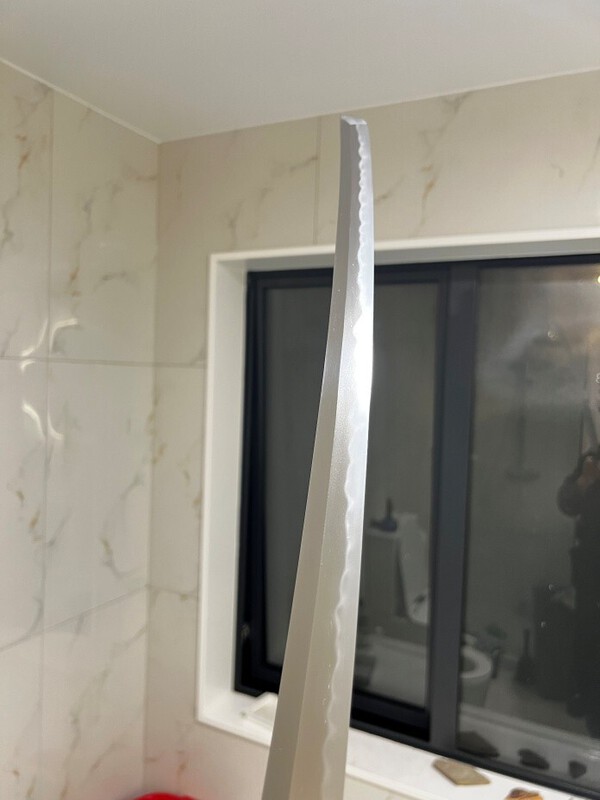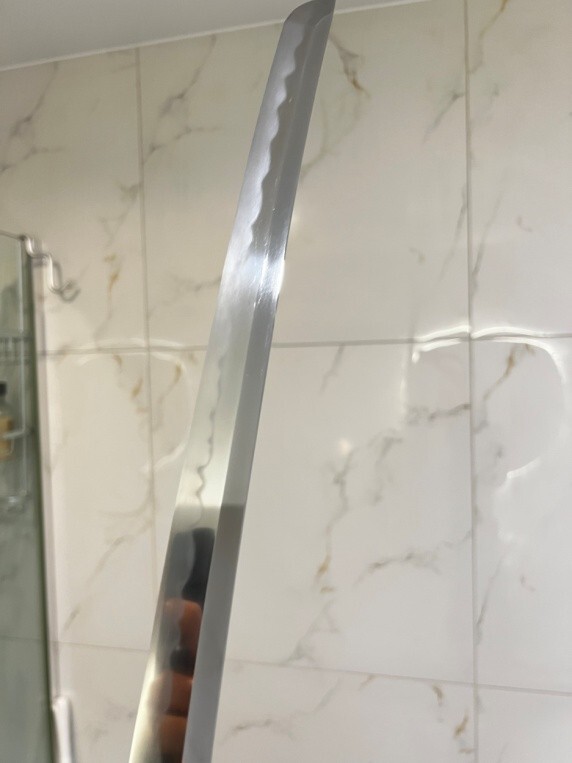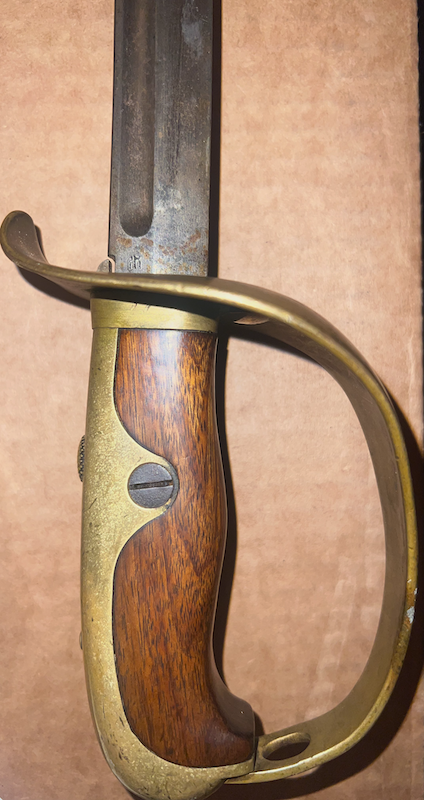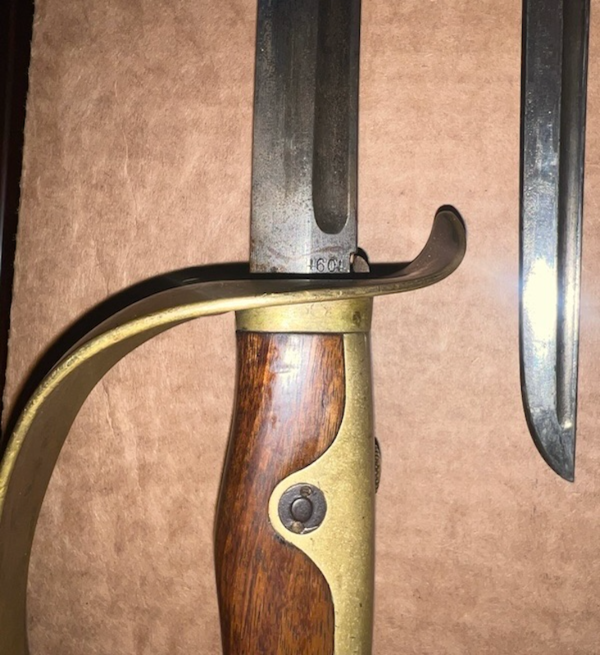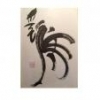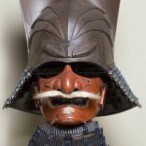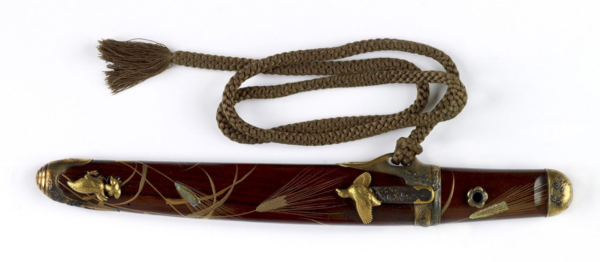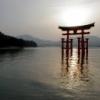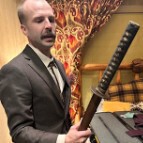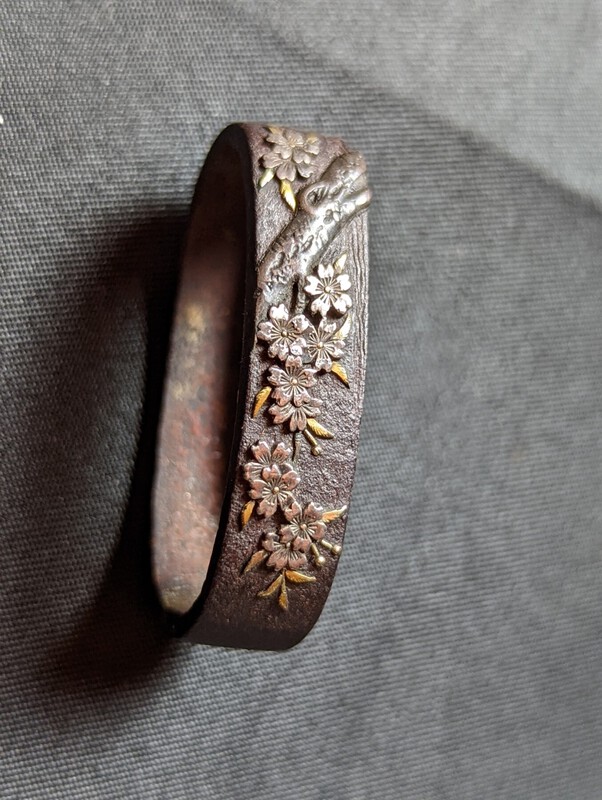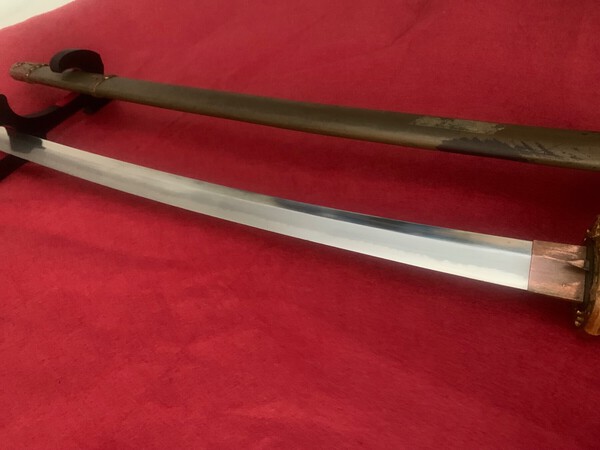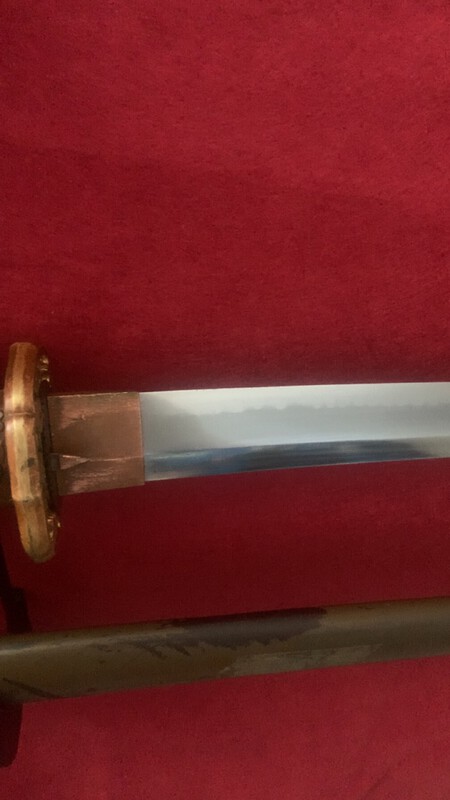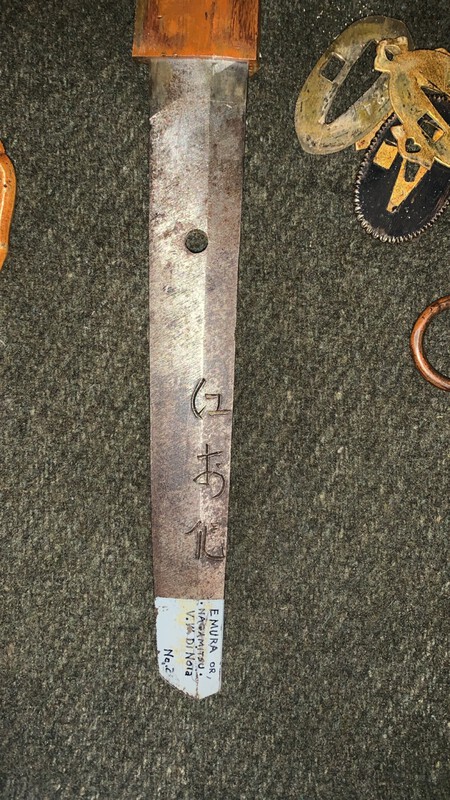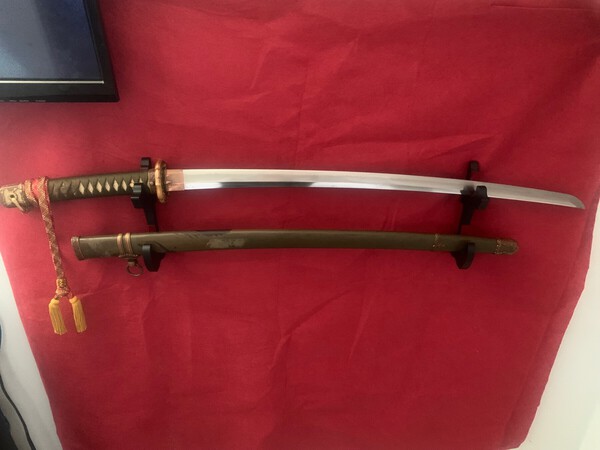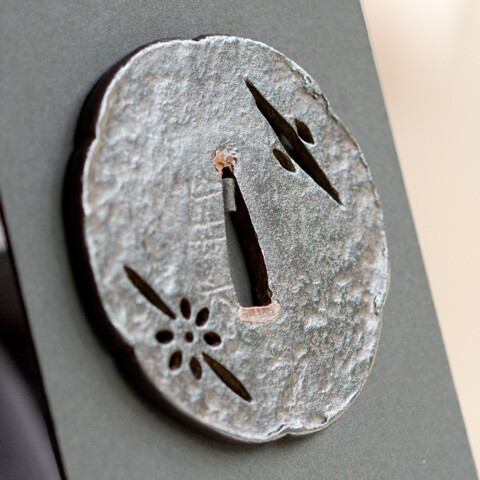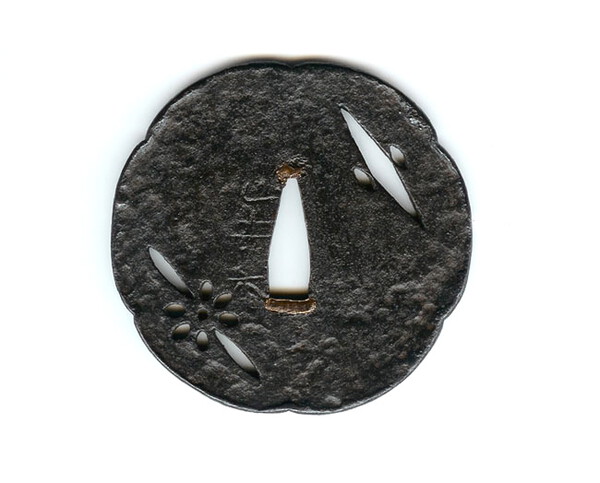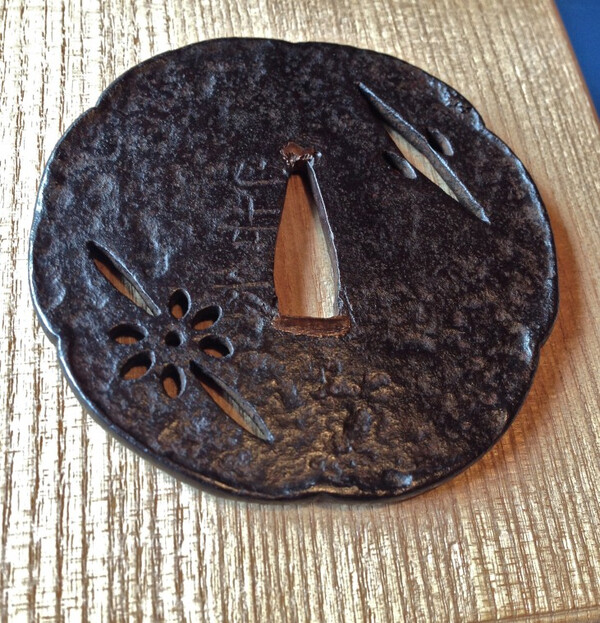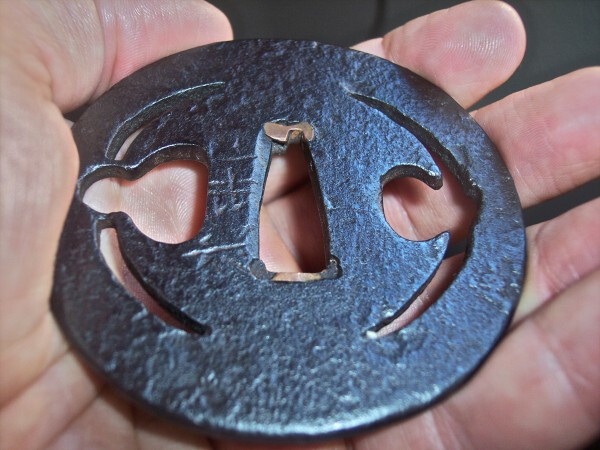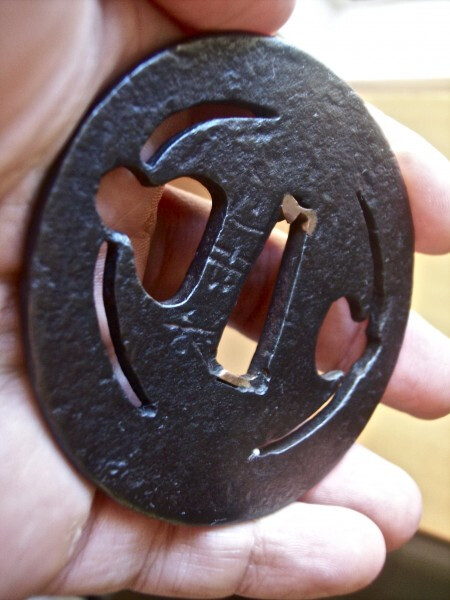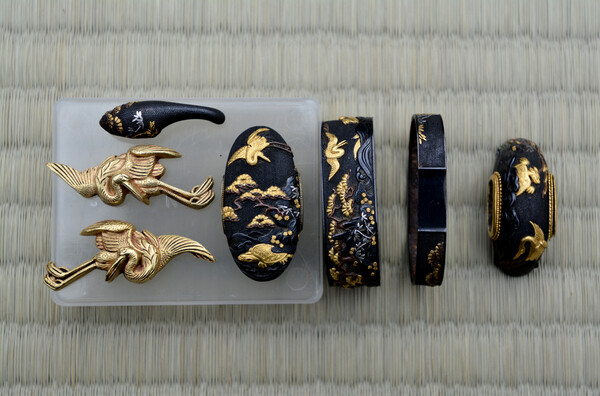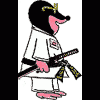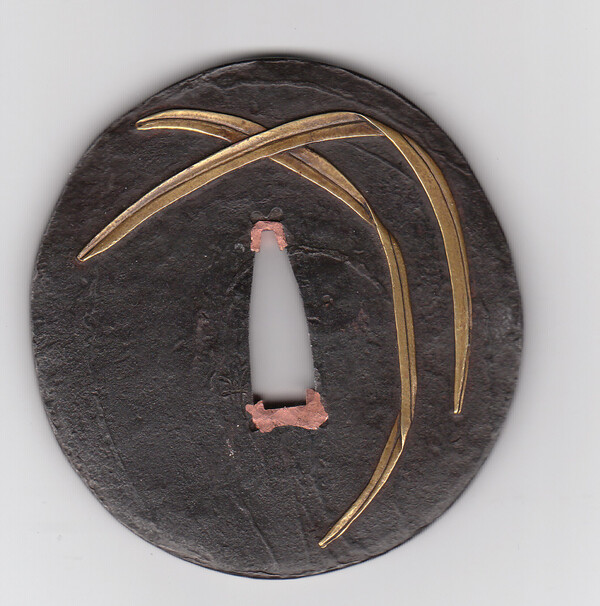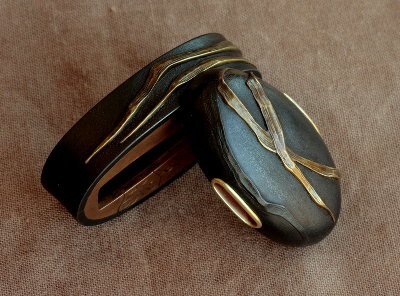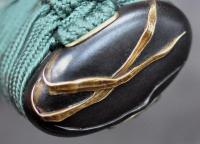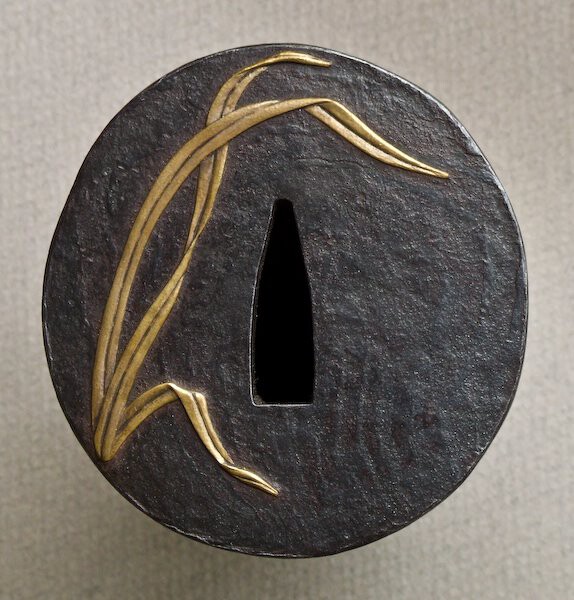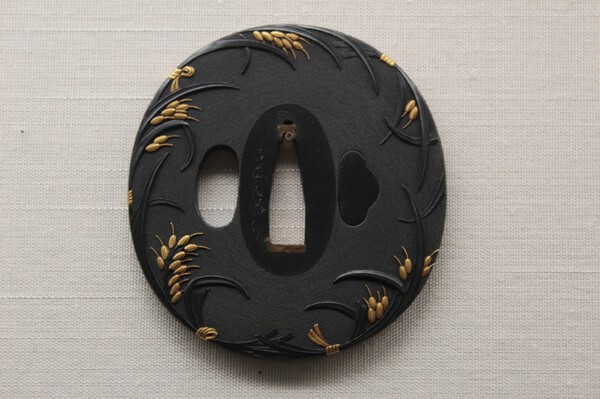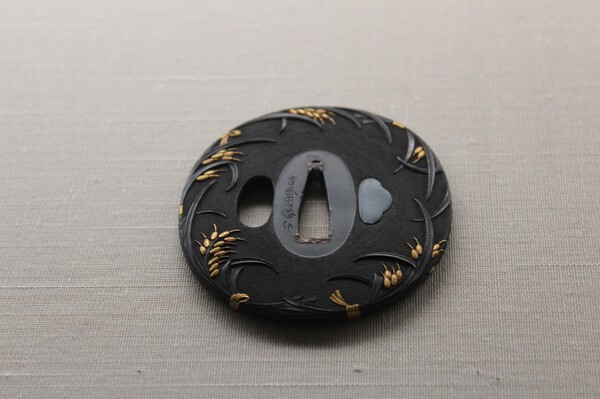Leaderboard
Popular Content
Showing content with the highest reputation on 05/18/2025 in all areas
-
Dear All I hope this finds everyone doing well? 48 hours ago I was greeted with the wondaful news that the NBTHK Japan has given us permission to share the English Versions of the NBTHK magazines from series #1 to #58 (ONLY) here on the NMB for educational purposes. Conditions are: - The Magazines cannot be sold to the public or board members. They must remain as free educational material. No profiting under any circumstances. - There must be a stable record of how many members are downloading the magazines (we already track the download numbers) - These are for the English magazines from the late 1970's and only numbers 1 - 58. - The NBTHK Japan must be acknowledged as the original publishers. This has been weeks in the making with 2 close contacts in Japan lobbying on our behalf and they really have come through for us so I have a lot of making up to do for them when I am next in Japan. I shall send everything to @Brian and allow him to upload them when he has time. Thank you for your patience everyone and I hope that the materials will help your education and collecting journey as much as it has helped so many in the past.3 points
-
3 points
-
Georg, thank you very much for bringing it to the NBTHK-EB meeting in Berlin, and for sharing your fantastic story. The blade looks amazing in person, even better than the wonderful pictures in this thread.3 points
-
Wonderful Rayhan and your contribution to the community is amazing! Huge thanks for NBTHK for allowing the old magazines to be shared. I think the English magazine ran for c. 15 years so within these magazines you will find many of the best Japanese swords as feature items.2 points
-
Thanks Conway He must have listed this wrong and a Nagamichi may be still be out there with an incorrect listing-we shall see -I did look up this Smith Miyoshi Nagamichi and was from Edo period and associated with the Shinto school of swordsmithing and this blade showed to not be of that age - I did discover this information below if I have the correct Smith- Kobayashi Naomatsu Kobayashi Naomatsu was a prominent Japanese sword smith, known for his skilled craftsmanship. He is often recognized as one of the top sword smiths in Japan, and his creations are highly sought after by collectors and enthusiasts. His swords are admired for their sharp edges and beautiful hamon (tempering pattern). Here's a more detailed look at Kobayashi Naomatsu's work: Skill and Expertise: Kobayashi Naomatsu is a master craftsman, renowned for his meticulous attention to detail and mastery of the sword-making process. Hamon: His swords exhibit a distinctive hamon, which is the characteristic tempering pattern on the blade. This hamon adds to the aesthetic appeal and functional properties of the sword. Katana Creation: Kobayashi Naomatsu is known for creating beautiful and functional katana swords, a staple of the samurai warrior class. Legacy: His swords continue to be prized by collectors and admirers, ensuring his legacy as a skilled swordsmith.2 points
-
Steve, I think this one was mislabeled. Looks to be the Showa period smith -Naotsugu. Here is the biography from Sesko's "Swordsmiths of Japan:" "NAOTSUGU (直次), Shōwa (昭和, 1926-1989), Yamagata – “Naotsugu” (直次), real name Kobayashi Naomatsu (小林直松), he was born in the 13th year of Meiji (明治, 1880) and worked later as rikugun-jumei-tōshō, jōkō no retsu (Akihide), Second Seat at the 6th Shinsaku Nihontō Denrankai (新作日本刀展覧会, 1941), Akihide lists him once more, under his real name Kobayashi Naomatsu and as ryōkō no retsu." Another nice sword! I am not sure how long ago your father-in-law purchased these, but he clearly took good care of them. See below for a reference to him on the NMB:2 points
-
Flamingo Tsuba by Ford Hallam. I acquired this in 2017 from a Finnish collector who had bought it from mr. Hallam. You can still find photos of the item in Hallam's Facebook page "Following the Iron Brush", go to photos and scroll down. Kinko 80mm x 76mm Mei is the one he used before going to Japan, so it's a combination of "F" and "H". As this is his old signature, I guess you might call this one a Ko-Mr.Hallam I have been inactive in this hobby for quite a while now and I think this tsuba would be better served in an active collection - to preserve his memory. Comes with a nice pouch! Price: 1500 USD / 1343 EUR + shipping. I'm based in Finland. If you need more photos, just ask! I have forgotten some of the terminology, so hopefully I got everything right.2 points
-
2 points
-
I am a central Indiana resident, so feel free to reach out to me via email. I'd be more than happy to help and give you opinions and options on what you could do. Edit: I am also the Indiana Token Kai site administrator, so feel free to contact me here. I've also sent you a message here on this site detailing how to contact me with ease.2 points
-
The wood of the stock shrinks and grips the barrel. Sometimes there is rust involved which makes for an even more solid grip. You are right; some of these slender stocks look and feel quite fragile. Gentle all-round use of a rubber mallet can be better (and less painful) than the palm of the hand. Tapping everywhere can break unwanted seals, and loosen things up.2 points
-
Awww it'll be a shame when you've done them all. It's been nice to see the whole collection coming through. One of my greatest joys in the hobby is buying unseen gunto and opening them up to see what is in there. I occasionally buy some just to post them on here as I unbox them. Congratulations on your father in law's collection though!2 points
-
Tony, the TOSOGU look quite nice (TSUBA photos are upside-down) and should be kept in good condition. The blade is always the most important part. Take photos of it (orientation always tip vertically up) against a dark background. The signature is somewhat unusual as it is on the URA side. Orientation of the NAKAGO should be vertical tip-upwards, and photos made with light from the side). An expert should see this in-hand for a better assessment.2 points
-
Next on your bucket list will be a leather sword knot, either real or a reproduction. Gotta have one to complete the rig. And once you are settled in and ready to dive into the deep end of the pool, take a look at the following WRF thread. Short Development History of Type 95 Gunto2 points
-
Excellent blogs by other people, first and foremost Markus, have inspired me to being releasing a newsletter. Three topics each issue, each something not well covered by books. In this one you can find articles about: Kyushu nihonto Saiha and yakinaoshi - same of different? The true meaning of NTHK scores https://www.historyswords.com/news1.pdf1 point
-
Gentlemen, a friend of mine just showed me his sword. He has no information on it, so I took a photo of the MEI. I think I can read NOSHU no JU.....KANESHIGE SAKU. There is a small SEKI stamp just below the HABAKI, and, looking at the work traces, it is possible that the blade had this NAKAGO welded on. The blade itself is elegant in shape, but obviously sandpapered, so only a CHU SUGUHA HAMON can be seen but no HADA. Any support with reading the full MEI is thankfully received!1 point
-
This beautiful massive Gendai was made by Echigo Kuni Ju Uemura Sadakiyo Saku 上村貞清 . This blade was made in Showa 18th year (1943) one Lucky Day in March. This sword has a cutting edge measuring 65.5cm long, sori 1.5cm. The sword is in full NEW POLISH with the exception minor kitae-ware. This smith was born in 1884 and his real name was Uemura Yasuhachi. The shirasaya is in great condition and a solid copper habaki made for the sword, very tight, no rattling sound. He's in 3rd Special Honor Seat , famous gendai smiths Horii Toshimide, Shibata Ka, Takahashi Sadatsugu and Yoshihara Kuniie are one rank before him. $2,100 + shipping & PP1 point
-
4604 is now logged in - thank you, Conway! BTW 4604 helps to narrow down when they stopped stamping the serial number side - somewhere around 4500 would be my guess at this point. Thanks to everyone's input, I'm also getting a handle on which stamps were used and when. I've translated a couple and still working on the rest. Also, other swords from this era (including an artillery sword) have some of the same inspection marks. John C.1 point
-
Dear All. Apparently nothing wrong with Colin's memory, this from Christie's sale 16th/17th June 1997. Thought I had seen it but took me a minute or two to find it. Rather unhelpful catalogue description: 'A wakizashi and a rare lacquered stand of Ryujin. Mei Yamato no kami Yoshimichi, 17th century. ....with a rare lacquered wood stand of a standing Ryujin holding a tama. (Slight damage) 19th century. The stand 103cms high.' The pre sale estimate was a steep £15,000 to £20,000 though it appears not to have sold at this time. (Woops! Mistake on the estimate now corrected.) All the best,1 point
-
1 point
-
1 point
-
Thanks, Brian. I hadn't continued through the whole of the thread.1 point
-
1 point
-
That habaki is confusing….it looks maybe as if it has been painted gold or perhaps been given a thin plated gilt wash. It isn’t gold though sadly. The fuchi and kashira do not match (I’m sure you know they are made in matching pairs) which is a shame. The “gold section with scalloping” on the kashira are small gilt tubular eyelets that prevent the ito from being damaged by the edges of the kashira. Overall, the mismatched mountings are of very modest quality and possibly assembled in more recent times. I would not remove the Ito to check the menuki, it’s a million to one shot that they are gold. Apologies for the somewhat downbeat opinions but best to be realistic.1 point
-
1 point
-
Noshu ju Murayama Kaneshige saku, Seki, born Meiji 42 (1909) July. There are several Kaneshige. This is in Slough p. 64-651 point
-
1 point
-
1 point
-
1 point
-
Their original design was to be secured to the wrist so that in combat the sword would not be lost if it fell from sweaty hands. By World War II, they were essentially just rank indications.1 point
-
You’re always welcome to share photos here of your sword. I think we’ve got some members from the Indiana area. Also, it might be worth contacting the Indiana token kai https://indianatokenkai.wixsite.com/indiana-token-kai Best of luck, -Sam1 point
-
1 point
-
1 point
-
1 point
-
1 point
-
A little back story -These swords are my father in laws. He getting older and hasn't looked at these in a Quite a few years. So i have been pulling them out to clean and oiled which he has enjoyed -So now when I go over I pull a few out and take pics to post on here to learn what they are.Thanks to everyone here I am able to share information on each with that he does enjoy.Was there today and will post 4 more but we are almost threw all of them I am still amazed that i could be holding a blade that is so old and still in nice condition1 point
-
In the same way as a military rifle isn't considered "complete" without an original sling, I would tend to think that no sword is complete without the appropriate tassel, but that is only my take on the subject, nothing more, and I am no expert in the field of Japanese swords.1 point
-
1 point
-
Have it in hand now. Very happy with it. Some beautiful little silver inlays and decorations. The rod is missing and the pan cover. I tried to disengage the barrel but it doesn't seem to want to move and I don't want to damage it. I checked all 4 mekugi ana in front of the breach and they seem empty. I can see light through all four. I disengaged the brass band holding it at the front of the barrel and removed it attempted to lift the barrel with my palm as described but it is pretty solid and barely moves at all. (I followed your guide on breaking it down) Will maybe leave it for another day as I don't wish to damage it by forcing it.1 point
-
Bummer! Maybe you can locate it on the ground somewhere. If it just fell out easily, it probably was unthreaded or possibly damaged. You can find a replacement or a copy. Not ideal, but the screw is a pretty minor part so I wouldn't sweat it too much. If you were to sell it, I'd just disclose that you replaced the missing mekugi screw. I don't know anything about this particular seller, but this is the part you're looking for: https://www.ebay.com/itm/196866959064?1 point
-
1 point
-
1 point
-
1 point
-
Tested both Edge and Chrome, everything working fine and all pics visible.1 point
-
This was just posted by Andrew Ickeringill ( @Andrew Ickeringill ) on Facebook, and I thought it was worth posting here, and pinning for the future. Andrew is a FULLY trained traditional polisher and one of the most qualified to make these statements. Before bringing up the subject on this forum, and risking a storm of fire, please read this and take it to heart. Amateur sword polishers… I know you probably won’t listen, but I’ll try anyway. Recently, I’ve been seeing more and more rubbish from amateur polishers on the internet, it’s not a new problem, but with social media being what it is, amateurs have been given a platform where they can prosper. It’s beyond frustrating, it’s infuriating, and it's working directly against what I'm striving for, the preservation of Nihonto. I’ve had to correct the damage caused by amateur polishers many times, and the damage is always severe. Correcting these hack-jobs takes a lot of work, and it means removing more steel than would’ve otherwise been necessary if the blade had previously gone to a traditionally-trained togishi. A traditional apprenticeship in togi takes years to complete for a reason, THERE’S A LOT TO LEARN! It means giving up everything else to spend your time in servitude to Nihonto. My apprenticeship was 12 hours a day / 7 days a week / for over 6 years, and even my spare time (what little I had) was usually spent studying nihonto. But if you want to be a togishi, this is the way it must be, you have to go all in. Through arrogance or ignorance or both, amateur polishers have completely forgone this necessary training. Some of them may have attended seminars in Japan, or visited a togishi for a few days… but this obviously doesn’t equate to traditional training. And for many amateurs, the bulk of their training consists of reading books and watching youtube videos of swords being ruined without a clue. Unfortunately, these videos receive plenty of misguided encouragement from those who don’t know any better… “wow, so shiny!”. Amateurs will often argue… “this sword isn’t worth sending to a pro, should we just leave it to rust?”… but how would THEY know? They haven’t been trained in kantei, they have no idea if a sword is worth a professional restoration or not. A cold chill passes up my spine every time I think about this, how many great swords have been ruined by amateurs? I know I’ve already seen a few in my time. If you’re an amateur polisher reading this, let me give you a tip… this job is not for you. This isn’t something that should be attempted by anyone but a traditionally trained togishi, and if you haven’t realised this fact by now, then you need to develop more respect for Nihonto and the craftsmen who have worked their butts off to complete the proper training. Please stop scraping the life away from these works of art, you’re doing far more damage than repair… this job is not for you!1 point
-
Simon, I appreciate your thoughts and recommendations, especially given your personal experiences I also can feel what you subly are suggesting to me. So also let me be honest: my feeling is that I already got more than I ever expected. And I am very thankful for this gift that I truly stumbled upon. Maybe a year ago I read a very old post (or entry? I can't say for sure) of Darcy Brockbank where he told the story of a Nihonoto collector who has a very high end blade, but only papered Hozon. To now summarize it in my words, simply because it confirms the signature is original, and that was enough for this collector, he got what he wanted. This made me think way more than it probably should. The result was that I noticed the certification at higher level, while it does honor certain pieces, is, at least it appears to me, a truly part of Western culture - to "win", to put something "at highest level", to "compete" with others. If you though look at a blade from an isolated point of view the Hozon or Tokubetsu Hozon papers are way more important, because (if signed) they verify the (signature of the) blade, whereas (to my understanding) Juyo is way more often seen as an award. Additionally (and mentioning it again), does a Masayuki/Kiyomaro blade absolutely need Juyo? Now doing the comparison/competition that I just doomed: for a lot of other smiths the fact if they are Juyo or not make a huge (especially value-wise) difference for them. Blades made by Masayuki/Kiyomaro are, from what I learnt and got told during my journey, somewhat flying above this. So even from this view, unless you have set certain collection limitations such as "Juyo only" or are a "certification junkie", it does not make this much of a difference. If you by now wonder based on the above why I even bothered to submit to Juyo, the answer is pretty simple. Because it already was in Japan, and because you nevertheless try, when the limits for the preconditions are low. Yes, sure I could wait and submit it next year again. And the following year. From what I gathered the chances that one day a blade (fulfilling certain levels of quality) can get Juyo if submitted enough times exist. But what are my advantages of this? In case this really applies, it would simply be a question of time and money until one gets Juyo papers. This to me, given the premise that I'll keep the blade anyway and do not plan to sell it, makes not this much sense whereas for a dealer who is looking/needs to make profit it makes more sense. So my premises are much different and not commercially driven. Finally, I am still young, plus I expect the NBHTK even exist after my death, or at least there will always be some kind of certification of higher level. So if I ever decide I want to go for it again, then there will always be possibilities for this. Even for my descendants.1 point
-
1 point
-
1 point
-
1 point
-
1 point
-
1 point
This leaderboard is set to Johannesburg/GMT+02:00


